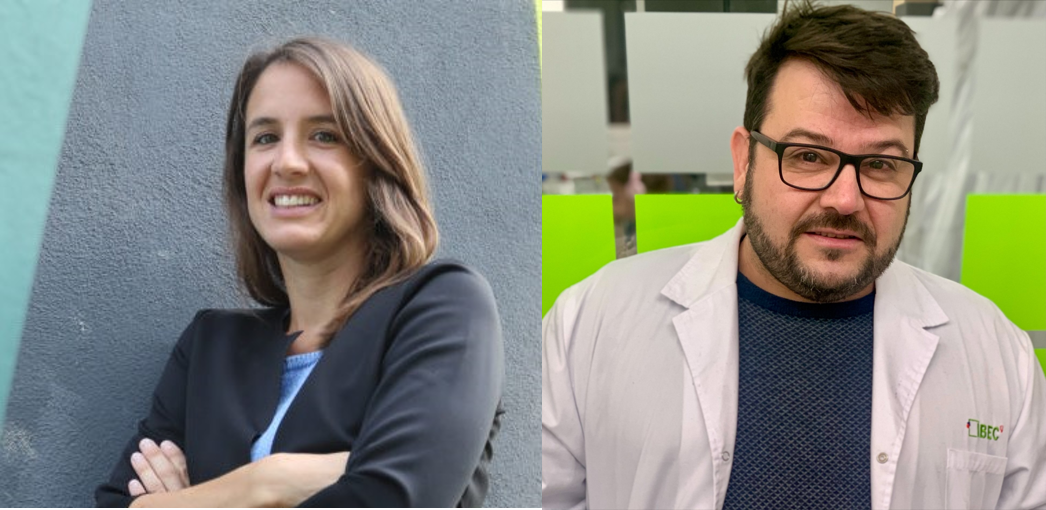
The Barcelona Institute of Science and Technology (BIST) announced the five winners of the first phase of this year’s BIST Ignite Programme today. This is the fifth edition of the programme, which promotes multidisciplinary collaborations at the frontiers of knowledge to solve scientific and societal challenges that have yet to be solved by cutting-edge research.
Once again this year, most of the grant-winning projects focus on health and more specifically on the search for new therapeutic alternatives for diseases that have no cure. These include neurodegenerative diseases such as Huntington’s chorea, triple negative breast cancer, muscular dystrophies such as Duchenne disease, and the pathological accumulation of senescent cells.
PolySTOP: understanding and controlling the genetic alteration of the polyglutamines that cause Huntington’s chorea
The expansion of certain amino acid chains (polyglutamines, PolyQ) in various proteins found in neuronal cells is responsible for neurodegenerative diseases such as Huntington’s chorea, which currently has cure and no treatment to slow down its development.
Benedetta Bolognesi, leader of the Protein Phase Transitions in Health and Disease Group at the Institute for Bioengineering of Catalonia (IBEC), and Xavier Salvatella, leader of the Laboratory of Molecular Biophysics at the Institute for Research in Biomedicine (IRB Barcelona), lead PolySTOP. The project will combine the methodology developed by Bolognesi’s lab to measure these amino acid expansions in vivo —which will apply to the more than 300 mutations of the Htt-Nt protein responsible for Huntington’s disease— with the experience of Salvatella’s team in the structural study of these expansions and the design of peptides.
“Our methodology allows us to analyse the propensity of thousands of PolyQ sequences to produce amyloid plaques. It is a systematic way to measure how these chains and their ‘adjacent regions’ impact aggregation. With this we can obtain ‘mutational landscapes’ that will allow us to understand what exactly these areas do in the aggregation process. Xavier’s team will then be able to study their structure and design peptides that can bind to glutamines and control their aggregation”, explains Dr. Bolognesi. “This may offer therapeutic alternatives not only for Huntington’s, but also for other neurodegenerative diseases that are currently untreatable”.
ASITOC: muscles-on-a-chip and biomagnetism sensors to accelerate the design of new muscular dystrophy treatments
There are more than 30 hereditary diseases that cause muscular dystrophy. Some are very severe and rapidly developing, such as Duchenne disease, which affects mostly boys. “Muscles with dystrophy move, but differently from healthy muscles. For example, they have weakness and longer relaxation times. What we’re trying to do is reproduce the characteristic movements of diseased muscles in a microfluidic device (organ-on-a-chip) and integrate magnetic sensor technology to measure the contraction dynamics,” explains Juan Manuel Fernández-Costa, IBEC postdoctoral researcher and project co-leader together with Michael Tayler, postdoctoral researcher and “la Caixa” Junior Leader at the Institute of Photonic Sciences (ICFO).
Both technologies are very novel and present the added challenge of reproducing the muscle movement affected by a pathology, and measuring this movement’s extremely weak biomagnetic disturbances. “The measurement of magnetic fields from biological sources is already being applied to the brain (magneto-encephalography) and the heart. But the magnetic fields produced by these organs are three times the order of magnitude of those generated by a muscle-on-a-chip,” stresses Michael Tayler. “The project is absolutely pioneering in this field”.
The ultimate goal is to have a device capable of measuring the changes that occur in the muscle when certain compounds are applied to it, which would allow us to use it for testing new drugs and treatments. The system could have applications not only for the most severe cases of dystrophy, but also for the more than 700 known muscle diseases and even in other pathologies where there is a change in biomagnetic potential that could be measured by this technology.
BIST Ignite
Each of the five projects will receive a grant of 20,000 euros to carry out the first ten-month phase, after which, depending on the results obtained, a panel of experts will select two of the projects to receive an additional funding of 50,000 euros. The aim of the programme is to help projects with a highly innovative approach and strong potential, which may subsequently apply for competitive funding calls, to get off the ground. Since the launch of the first call in December 2016, there have been five editions of the BIST Ignite Programme, with a total of 23 projects receiving funding, for a total amount of €810,000, and with the participation of more than 170 researchers from the seven BIST centres.
More information about all the awarded projects: BIST.





